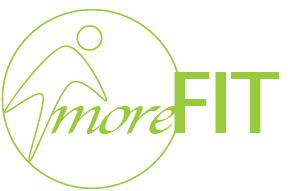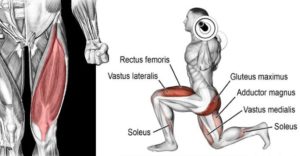Lunge – It Does the Body Good!
A lunge can refer to any position of the human body where one leg is positioned forward with knee bent and foot flat on the ground while the other leg is positioned behind. Anyone can do them: athletes in cross-training for sports; weight-trainers as a fitness exercise; and yogis as part of an asana regimen. The lunge is a lower-body exercise that targets multiple lower-body muscles: hips, glutes, quadriceps, hamstrings, calves, core (abdominal and back stabilizers) and the hard-to-reach adductors of the inner thigh.
Performing lunges can help you develop lower-body strength and endurance, and they are highly effective at evening out muscle imbalances. They are also a great beginner move because you pretty much do them daily (they mimic our walking pattern).
To perform the lunge:
- Stand tall with feet hip-width apart. Remember to engage core.
- Take a big step forward with the left leg and shift weight forward so heel hits the floor first.
- Lower body until right thigh is parallel to floor and right shin is vertical. It is okay if knee
shifts forward a little as long as it does not go past the toe. If mobility allows, lightly tap left
knee to ground while keeping weight in right heel.
- Press into right heel to drive back up to starting position.
- Repeat on the other side.

Remember these key ingredients:
- Prepare your body for movement through a proper warmup
- Drive through your heel(s) to maximally recruit your glutes
- Keep hips aligned to protect any knee deviation
- Brace your core to create intra-abdominal pressure
- Keep your head still throughout every exercise
Both forward lunges and rear lunges target the same muscles in your thighs, buttocks, and calves. The primary muscles affected for Rear lunges are the quadriceps in the front of your thigh, the gluteus maximus in your buttocks, the adductor magnus in your inner thigh and the soleus in your calf. The forward lunge primarily focuses on the glutes in the hip and buttocks as well as the quadriceps and hamstrings in the thigh, but also works muscles in the calf.
*The Mistake: The Heel Pop
When it comes to lunging, you want to step forward enough that your front heel will not pop off the floor. If your step is too shallow, your knee will travel forward past your foot, which puts unnecessary stress and strain on the knee
The Fix: Take a larger step, plant heel, and drive into floor to return to starting position.
With a forward lunge, it’s okay to, well, shift your weight forward. But beware of bending at the hip and letting your upper body drop, which will put added strain on your knee.
 *The Mistake: The Upper Body Drop
*The Mistake: The Upper Body Drop
With a forward lunge you must shift your weight forward. But beware of bending at the hip and letting your upper body drop, which will put added strain on your knee. This is especially important if you are doing a lunge under load or with a weight. If your chest falls, you run the risk of losing balance, falling, or even dropping the weight on yourself
The Fix: Engage your core (think about pulling your belly button to  your spine) and keep your eyes forward instead of looking down.
your spine) and keep your eyes forward instead of looking down.
*(Reference: American Council on Exercise)

